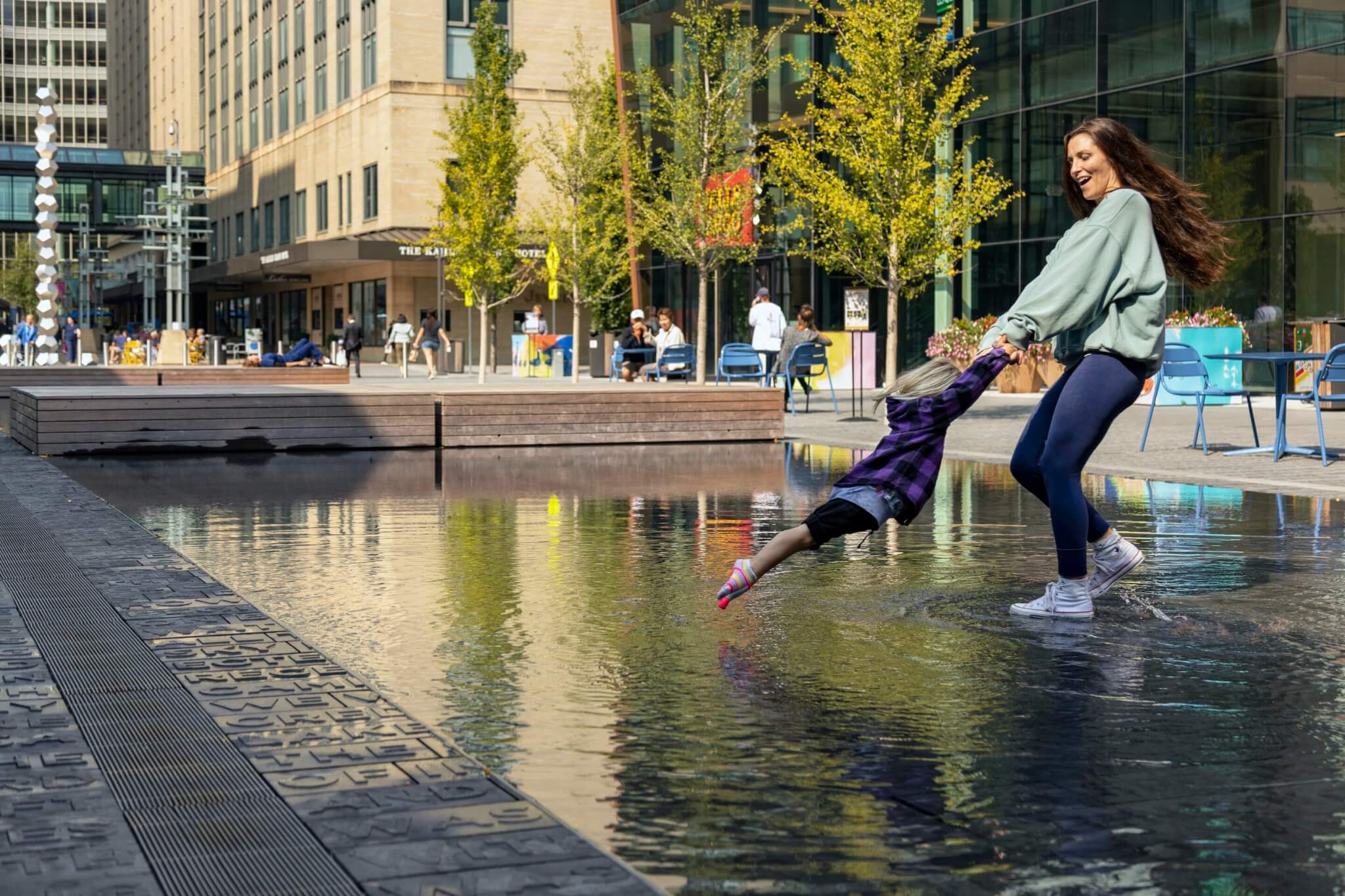Strips of earth running north–south where long ago glaciers carved their paths in limestone cliffs; flatland prairies that have been burned for regrowth; vast stretches of cultivated farmland; swamps built into cities; and more: These are the landscapes that make up the American Midwest, a place that has been shaped by human agents and natural factors for millennia. Much of this contouring has colored this area as the nation’s “breadbasket,” ripe for picking, whether it be for food or fuel. For landscape architects working in this region, this shaping is both physical and metaphorical, and it continually informs their practices, whether they’re working in Minnesota, Illinois, Ohio, or the eastern edges of the American Rust Belt. But instead of replicating extractive practices, they’re tapping into working-class histories and regenerative strategies that lay a path to a future where climate, labor, and natural resources become central to everyday life.
Indianapolis, Cleveland, and Pittsburgh
When Chris Merritt and Nina Chase opened their landscape architecture firm, Merritt Chase, eight years ago, the two founders, who met while working in Sasaki’s Boston office, wanted to focus specifically on the Midwest. They located their two headquarters in Indianapolis and Pittsburgh to “redefine what contemporary middle American landscape architecture is and could be,” Chase told AN.
With many commissions in Rust Belt areas, their projects, Merritt said, tell “comeback” stories. “We’re often participating in projects in rebounding downtowns, redeveloping urban districts from an economic lens, and thinking about trying to retain or recruit talent back to cities.”
From an ecological viewpoint, however, they recognize that many residents have familial or ancestral connections to the land itself; they’re also prompting residents to “come back” to that history. Many Midwesterners, he says, “grew up with a connection to a creek or river or forest or farm or field, and [we’re] capturing that from a material standpoint, so that local identity is authentically represented in these places that, otherwise, are cast under a broad stroke of the flyover state.”
Many of Merritt Chase’s commissions are located in swing states like Ohio. In Cleveland, they’re doing two projects: Canal Basin Park, which will bring visitors back to the city’s industrial riverfront, where a canal and railroad supported the area’s economic history; and The Midline, an existing railway that will include a greenway and industrial development. In these projects Merritt Chase tries to instill pride in place. This could mean celebrating an area’s industrial or working-class history and generating the political will to make people-and-ecology-centric projects happen.
Chicago
Ernest Wong and his firm, site design group, have spent 35 years working across priorities that change with each mayoral administration in the Windy City. Though civic leaders don’t need much convincing about the benefits of things like climate resilience or outdoor space, site has built a reputation on delivering these types of landscape projects to those who most need them by focusing its attention on working-class people and, importantly, their futures. “Historically, the city has been a very working-class city and a working-class immigrant city,”
Wong said. “A lot of times, [these residents] are still working seven days a week, so being outdoors is a luxury.”
Site’s Ping Tom Memorial Park is emblematic of the office’s ethos. Completed in 2013 and located in Chicago’s Chinatown neighborhood, which lacked green space for decades, the park, designed by site, delivered a space that asserts Chinatown was, is, and will continue to be inhabited by Chinese families. Chicago’s Chinatown is one of the few Chinatowns in the U.S. whose Chinese population is still growing. The park celebrates the area’s industrial past by inviting residents back to the once-polluted Chicago River and frames views of former railways, cantilevered bridges, and factories.
“I think that had we designed that park not along the Chicago River, it would not be as popular as it is now,” Wong explained. “I think that those qualities of the river and the railroads make that park what it is. It’s not necessarily the park space itself, but the things that are around it.”

Minneapolis
Minneapolis-based Coen+Partners (CP) principal McKenzie Wilhelm speaks of Midwestern landscape practices as “regenerative,” meaning not only do they reaffirm the region’s working-class history and ethos but they are also spearheading the movement to change our relationship to the land itself. This attention might be expressed through caring for soil health or water quality, she said, especially as climate change’s effects ripple across the region. But it also means discovering what allows people to thrive, even in difficult climate conditions.
The Midwest, notes CP director Laura Kamin-Lyndgaard, is primed for this type of thinking. “The words that come to mind are incredibly hardworking, the sense of grit and perseverance, of not only weathering the harsh climates but embracing them,” she stated. With this attitude in mind, practitioners are now seeing land as part of maintaining human livelihoods through physical and cultural resource stewardship.
For Wilhelm, this might mean acknowledging that the Midwest nickname “America’s breadbasket” no longer fits. What feels more appropriate today is “an understanding of what a more reciprocal version of land stewardship looks like,” she said. “Land isn’t necessarily seen as just an asset that’s going to make you money, but also something that requires care and understanding at the systems level.”
The Forest and the Trees
Part of the work is acknowledging that the region’s economy has relinquished its share of the cash-crop/export economy that powered its original growth. Now, cultural and ecological assets are greater sources of growth and economic revitalization. While landscape architects certainly play a role in that effort, the region’s potential for positive reinvention must come with other political and architectural investments in its housing and sustainable sectors. Across the plains, forests, and urban environs, landscape architects, trained to analyze, design, and maintain natural environments, stand ready to lend a helping hand.
Anjulie Rao is a journalist and critic covering the built environment.
→ Continue reading at The Architect's Newspaper
